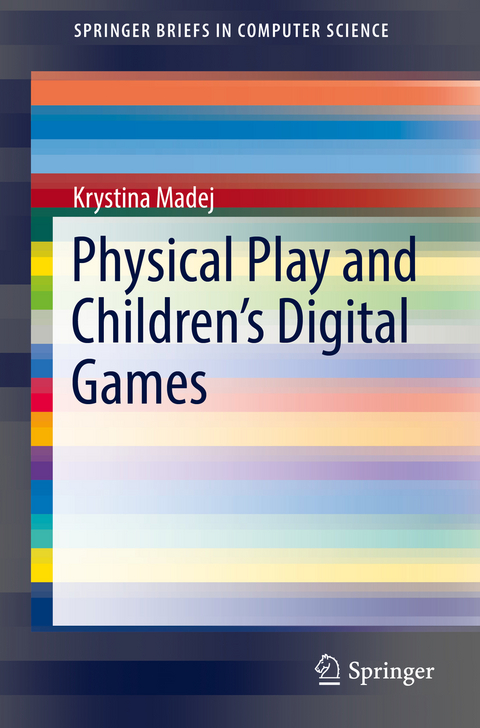
Physical Play and Children’s Digital Games
Seiten
2016
|
1st ed. 2016
Springer International Publishing (Verlag)
978-3-319-42874-1 (ISBN)
Springer International Publishing (Verlag)
978-3-319-42874-1 (ISBN)
Play engages humans cognitively, emotionally, and physically at all ages. Using a historical framework, and focusing on play as represented by material artifacts such as toys and games, this book explores play as a form of somatic engagement that reflects cultural attitudes about development and learning as these have evolved over time in western culture. Theorists in the twentieth century such as Klein and Winnicott, Huizinga and Callois, Piaget, Bruner and Vygotsy brought different perspectives to our understanding of play's role in our society. In particular, Vygotsky's theories about process provide insight into how children attend to learning and assimilate new information. The increasing use of digital media as both an entertainment and learning environment at ever-younger ages, is generating new discussions about the nature and value of play in children's development, in particular, physical, or somatic play.
The emphasis on games intended for children necessitates a discussion of the cognitive, behavioral, and neuroscience that supports play activities and physical engagement as a crucial aspect of development. The book then looks at the trajectory of digital games in contemporary culture and explores whether these artifacts (whether intended for learning or entertainment) have extended or are curtailing boundaries of somatic engagement. Finally, the book discusses alternative play and game design and, speculates on the future of new media play artifacts.
The emphasis on games intended for children necessitates a discussion of the cognitive, behavioral, and neuroscience that supports play activities and physical engagement as a crucial aspect of development. The book then looks at the trajectory of digital games in contemporary culture and explores whether these artifacts (whether intended for learning or entertainment) have extended or are curtailing boundaries of somatic engagement. Finally, the book discusses alternative play and game design and, speculates on the future of new media play artifacts.
Introduction.- Play.- Child Development.- Toys and Games.- Engaging Young Children in Physical Play.
| Erscheinungsdatum | 03.01.2017 |
|---|---|
| Reihe/Serie | SpringerBriefs in Computer Science |
| Zusatzinfo | XII, 89 p. 48 illus., 40 illus. in color. |
| Verlagsort | Cham |
| Sprache | englisch |
| Maße | 155 x 235 mm |
| Themenwelt | Mathematik / Informatik ► Informatik ► Betriebssysteme / Server |
| Informatik ► Software Entwicklung ► User Interfaces (HCI) | |
| Schlagworte | Childhood Education • children's games • Child Well-Being • Computer Science • experiential games • haptic games • learning games • Media Design • play and games • user interfaces and human computer interaction |
| ISBN-10 | 3-319-42874-8 / 3319428748 |
| ISBN-13 | 978-3-319-42874-1 / 9783319428741 |
| Zustand | Neuware |
| Haben Sie eine Frage zum Produkt? |
Mehr entdecken
aus dem Bereich
aus dem Bereich
Aus- und Weiterbildung nach iSAQB-Standard zum Certified Professional …
Buch | Hardcover (2023)
dpunkt Verlag
CHF 48,85
Lean UX und Design Thinking: Teambasierte Entwicklung …
Buch | Hardcover (2022)
dpunkt (Verlag)
CHF 48,85
Wissensverarbeitung - Neuronale Netze
Buch | Hardcover (2023)
Carl Hanser (Verlag)
CHF 48,95


